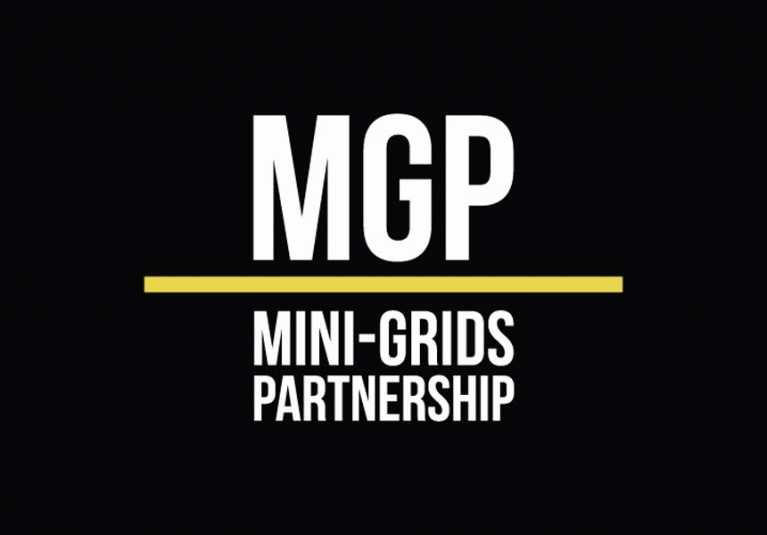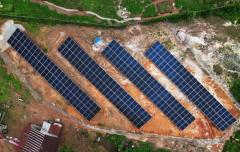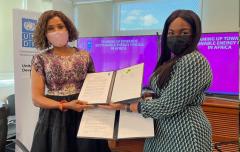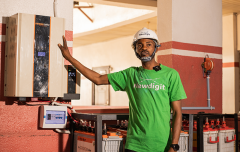Okra Solar: Start rapidly, start small and grow over time
Based in Cambodia, Okra Solar provides IoT and AI enabled hardware and software to last-mile energy companies so they can sustainably energize remote off-grid communities. This interview with Afnan Hannan, CEO of Okra Solar, was originally published by the Mini-Grids Partnership.
Could you tell us more about Okra Solar and what inspired you to found Okra Solar?
One of the things I learned while growing up was that opportunities are now more accessible than ever. Having built robots and websites by learning on my own, it was pretty apparent that through the internet, people can basically learn anything and become anybody they want to be. But before getting there, people need to have their basic needs for livelihood addressed. And of course, before being able to use internet-connected devices, those devices need to be powered by electricity.
So I was inspired during my study years at university to figure out what drove people to set up infrastructure, and how this infrastructure could be set up in a sustainable manner. And that’s why we started Okra, to deploy a technology and business model that would make more money for communities connected to power than it would cost to connect them.
What do you see as the biggest challenges in implementing mini-grids in last-mile electrification and how do you work to help overcome them?
Upfront CAPEX cost and getting the land rights and permits to build mini-grids are often the biggest barriers to rolling out mini-grids at scale.
Okra mesh-grids give developers the ability to start rapidly, start small, and grow over time. In traditional systems, developers and governments have to try and size what a community might use years down the line and build infrastructure accordingly. Before building they need to submit these plans and get permits, which leads to projects taking a long time to get off the ground, being expensive, oversized and the vast majority of the time too expensive to warrant the risk of long-term load projections that may or may not be right. With Okra, developers can set up plug and play energy access on rooftops without land permits. These systems can be interlinked into mesh-grids to boost power availability.
Additionally, systems are modular so they can set up energy access for what the user needs on day one, and developers can then scale the assets as the load grows. This allows for low initial startup costs and rapid deployment, enabling them to tighten the loop to project development and implementation.
Could you tell us more about Okra Solar’s mesh-grid solution and how it can complement mini-grids electrification?
Mini-grids work great in powering productive centres and commercial productive loads, for example, agro-processing centres. These buildings or businesses, sometimes referred to as anchor loads, often need a system that can produce 100x the residential power consumption throughout the course of a day. With our goal of enabling productive power for communities while helping mini-grid developers optimize for cost, we have recently released a mini-grid to mesh-grid charger. This enables developers to set up the centralized solution where there is a large anchor load, then the residential network is implemented with a low-cost mesh grid, and excess power generated from the centralized grid is fed into the mesh. This lets mini-grid developers serve both anchor loads and residential loads. By slashing their distribution cost they can save about 50 percent of the CAPEX cost.
Could you share a mini-grid success story? How important is the productive use of energy for more rapid deployment of mini-grids?
Our pilot project in Cambodia was a great success story where 140 households were energized two months from the award of contract, including procurement. This was only possible because of the plug and play nature of these mesh grids. Each house can use up to 1.2kW of instantaneous power with AC power output.
This project was a 48.8kWp PV system with multiple villages energized in a commune spanning more than 3kM of distance and with a river separating the three villages. The average load in this community is currently over 500Wh/day and the network up-time is >99.8 percent. The community is using electric cooking, blenders, and kettles thanks to grant funding support from Efficiency for Access.
These productive loads are financed through the Okra software platform. If households do not top-up their mobile billing balance, which is used on a prepaid basis to cover their energy and appliance finance costs, households are temporarily disconnected over the cloud.
With this level of network control, high power availability, and productive appliance financing, the project is stimulating growth, which demonstrates the commercial viability of these projects in the most hard-to-reach areas.
Which markets are you active in and are you planning to expand to other geographies? What is the next big milestone for Okra Solar?
Currently, we are active in Cambodia, The Philippines, Indonesia, Nigeria, and Haiti. We have our hands tied up in these markets with more than 30 million households who are not connected to the grid in these markets alone. So, we’re working on expanding our operations and bringing in financing partners to facilitate our developer partners in rolling out at scale. Our next milestone will be when we hit 10,000 connections with our partners, and we’re gunning to make it happen in the next 12 months.
Photo credit: Okra Solar




